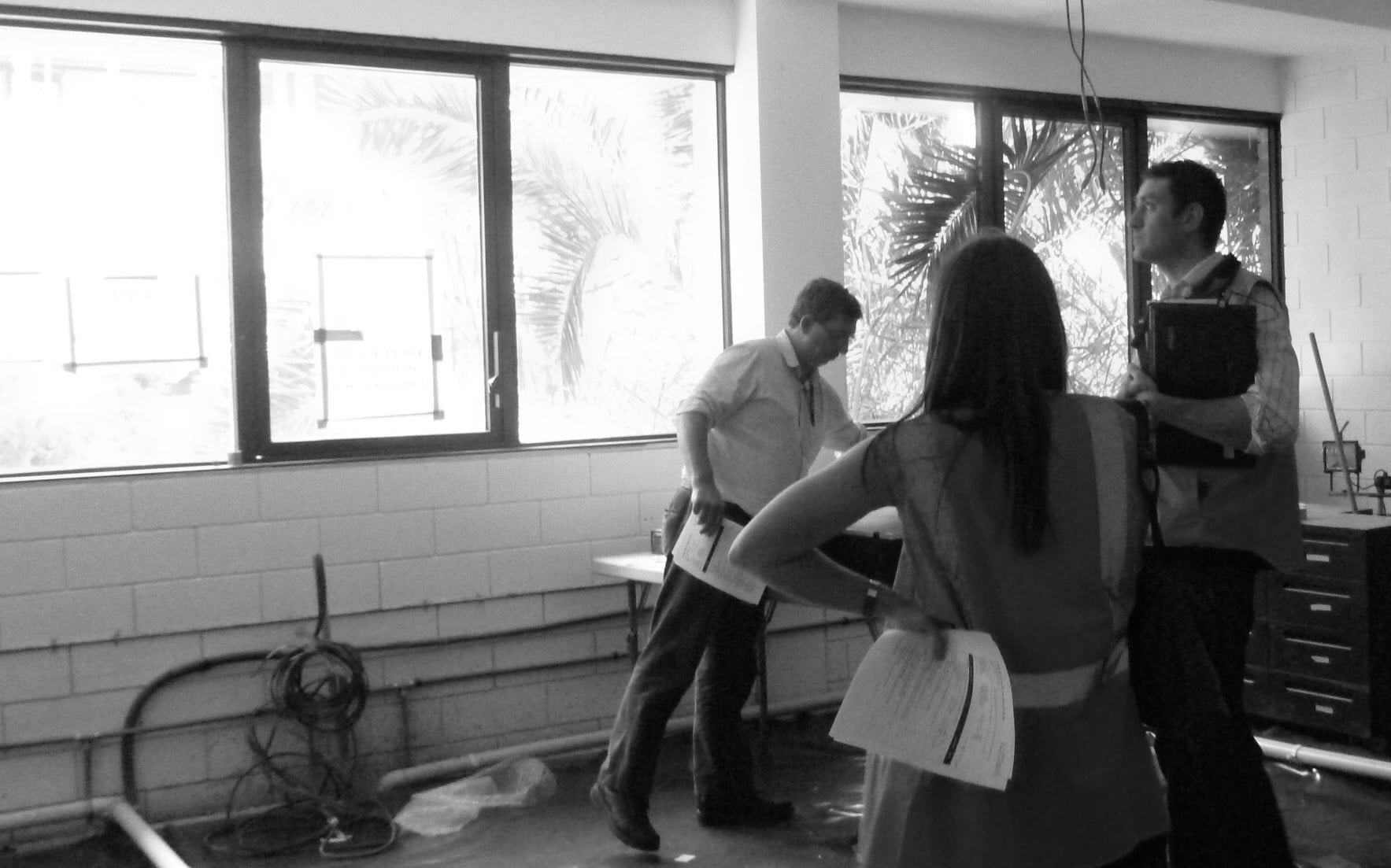“It is particularly important, when work becomes scarce, that architects see themselves as allies rather than competition.”
This is the first serious downturn for a generation of young architects. How might they use the ‘quiet’ time productively? Kendall Strong offers some advice gleaned from older mentors.

It’s not easy being an architect is 2012. New projects are scarce, rumours of fee‐cutting are circulating and the number of architects out of work seems to be growing. There is talk – such as in Timothy Moore’s article ‘The Advantage of Size’ in Architecture Australia May/June 2012 – of practices cutting back to their “core team” in order to weather the storm.
For those of us lucky enough to remain in these core teams it is, nonetheless, a stressful time. Not only have we had to say good bye to colleagues, we are now having to chase work more aggressively than has been required for years. Several architects I have spoken to have mentioned “buying” work in order to stay afloat.
This is the first serious economic downturn experienced by those who have entered the industry in the last decade. For a young architect this can be an intimidating situation, watching the pressure our directors are under and wondering whether this is really what we want for ourselves in years to come.
Many young architects I know are suddenly finding work quieter than it was just a few months ago and we’ve all heard rumours of practices dropping back to a four, or even three, day week. While they are relieved the have retained their jobs so far, these young architects are apprehensive about their own futures in particular and the state of the industry in general.
At a time like this we hear talk about using this new availability to reflect and regroup. While this is good advice, it can be hard for young architects to know what specifically they should be doing for their careers in order to use this time effectively. Having been lucky enough myself to receive mentoring from several senior architects – who have of course been through this many times before – I can offer the following suggestions:
1. Observe
This is a very difficult time for those running their own practices. Watching this can provide valuable lessons for those thinking about starting their own practice in future: observe your bosses, watch how they deal with this pressure and the techniques they use to overcome the challenges they face. Consider what you would do in their situation and remember that if you decide to start your own practice it is inevitable you will face similar difficulties yourself.
2. Network
You can never have too many contacts, both in architecture and in the wider community. These can help you find employment, bring in new clients or projects, help you establish your own practice and provide mentoring and support throughout your career. Networking is an ongoing process which requires commitment. Don’t be afraid to approach people you would like to connect with, and take every opportunity to attend events where you can make new connections.
3. Plan
Consider where you want to head with your career (don’t necessarily limit yourself to only one option), then work out the specific skills and experience you need to get there. Plan to attain these skills and set yourself a timeframe. Use your network to contact people who have taken a similar career path and talk to them about how they got where they are.
4. Be positive
Being confident is an important part of being an architect, but this can be difficult for those who are feeling insecure about their employment. Remember that this situation is not a reflection of your abilities but just a reality of the current economic climate. Genuinely see this time as a opportunity to fine tune your career plans and remember that sometimes adversity can provide a positive change in an unexpected direction.
5. Discuss
In order to gain perspective it can help to talk to others in a similar situation. Make an effort to catch up with architect friends in other practices, they can be a great sounding board and also offer the consolation of shared concerns. It is particularly important when work becomes scarce that architects see themselves as allies rather than competition.
We know this is only the first of several difficult periods that we will have to navigate. Rather than being intimidated, we can take the opportunity to really learn from the experience and come away with a greater sense of perspective and understanding of the cyclic nature of the industry in which we work.






















